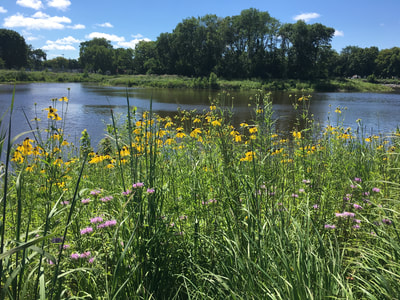While removing contamination in Areas of Concern is key to the long-term health of the waterways, it is just one step in efforts to revitalize the Great Lakes. Habitat restoration is also needed to create healthy ecosystems where diverse organisms and fish and wildlife populations can thrive. Restoration benefits local communities by increasing the aesthetic value of natural surroundings, improving fishing and hunting opportunities, and making the water safer for wading or swimming. The Great Lakes Legacy Act (GLLA) was revised in 2008 to include habitat restoration.
Habitat restoration activities are tailored to the needs of a specific site and can include a wide range of practices. Common restoration activities performed under GLLA include invasive species removal, native seed and plant installation, shoreline stabilization, and the installation of fish structures. Much like sediment cleanups, restoration resembles a large construction project—on land or in water. Large machinery is used to remove invasive species, spread native plant seeds, achieve a desired shoreline slope, and create depth and contouring under water. Sometimes, even scuba divers are recruited to facilitate underwater restoration!











